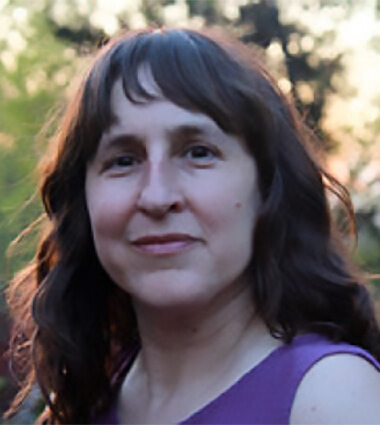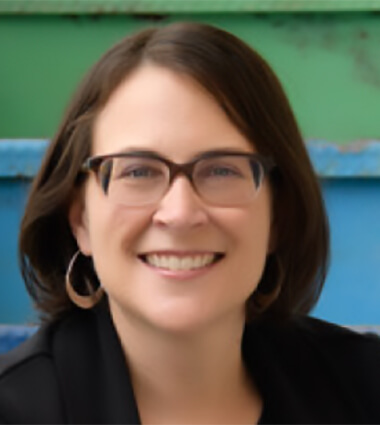Above: Detail from Golan Moskowitz. A Jewish History of Drag?, 2025.
What Do We Owe Our Queer Subjects?
Rachel Kranson
For students who took my “Gender and Jewish History” class at the University of Pittsburgh last fall, the queer lives of Jewish labor activists Pauline Newman and Rose Schneiderman sparked excitement about the Jewish past. They delighted in the knowledge that these activists had long-term partnerships with women, that Newman embraced gender nonconforming dress, and that a lesbian social network offered the two immigrants access to the most powerful social changemakers of the early twentieth century. Some of my students, many of whom inhabit LGBTQ identities themselves, found great personal meaning and pride in discovering historical queer Jewish heroes. As some of them explained to me, exploring the personal, affective aspects of Newman’s and Schneiderman’s lives helped them imagine new possibilities for their own futures.
Imagine my students’ discomfiture, then, when they learned that Newman took steps to remove evidence of queer love and intimacy from her archived correspondence with Schneiderman. For students to whom being “out” is a virtue and LGBTQ+ pride their cultural norm, how could they make sense of Newman’s desire to deemphasize that part of her and Schneiderman’s legacy? Moreover, did our classroom discussion of how sexuality impacted Newman’s and Schneiderman’s activism—a question with which Newman would likely not have wanted us to engage— represent an ethical breach?
I personally found out about Newman’s attempts to censor her archive back in graduate school upon encountering my classmate (now valued colleague) Anne Parsons’s research. The ethical questions raised by her discoveries plagued me then as they plague me now. They forced me to wrestle with my power as a historian, and to think about the responsibility I might bear to long-dead subjects when I interpret their stories. I don’t know that we can assume that Newman would have felt more comfortable sharing her queer legacy in a (somewhat) more accepting moment. And how much do we weigh this unknown against the need for our readers and students to encounter a fuller, richer past in which the personal is truly integrated with the political? My students also wrestled with these questions. Some argued that we should not be discussing the queer lives of Pauline Newman and Rose Schneiderman without their consent. Others argued that we needed to know this history, because without their lesbian social networks it would have been rather unlikely for two immigrant Jews to impact national labor policy. Schneiderman’s and Newman’s queer lives did not just serve as an inspiration, argued my astute students. They also made a difference in terms of what these activists accomplished in their own lifetimes.
Imagine my students’ discomfiture when they learned that Newman took steps to remove evidence of queer love and intimacy from her archived correspondence with Schneiderman.
Finally, we considered the fact that Pauline Newman and Rose Schneiderman are well known as queer figures, in spite of Newman’s attempt to redact that aspect of their legacy. When the History Is Gay podcast hosted an episode featuring Newman and Schneiderman and the NYC LGBTQ Historic Sites Project highlighted the building where Newman and her partner Frieda Miller raised their adopted daughter, it would be strange to suppress this discussion in our university classroom. The point seems moot—historians decided that Newman’s queerness mattered well before we entered the classroom, and so it does.
But the questions that Anne’s research brought up those years ago remain salient for those of us who teach and research LGBTQ history. What do we owe our subjects who never made it out of the closet? Is it possible to know how they would feel about us mentioning their queer lives in a new era? And to what extent would their qualms matter when confronted with the contemporary need to know and understand queer history?
Past Letters in a Queer Future
Anne Parsons
I remember my excitement when I visited Tamiment Library to do research on Pauline Newman’s letters to Rose Schneiderman for a “Gender and Jewish Women” class. The collection of letters between Schneiderman and Newman dated to 1910–1912, when the two Jewish immigrants were in their twenties. I thought that I would write about the two women’s intimacy and activism, but instead I learned that Newman destroyed parts of the letters. As a young Jewish lesbian, I was both inspired and distressed, as I chafed against the thought of people hiding parts of their identity. That tension prompted me to analyze the collection, comparing photocopies of the originals to the cut-up letters.
I found that in the early 1910s, Schneiderman served as the chief organizer of the New York Women’s Trade Union League and Newman served as the first general organizer of the International Ladies' Garment Workers' Union. Newman’s job took her across the country, as she organized garment strikes. Pauline wrote to Rose, then, with intimacy and longing. In one letter she wrote, “All evening I kept saying if only Rose were here …” She struggled emotionally, saying she tried to “get away from the blues.” “I am just thrown like a wave from one city to another. When will it end?” Newman’s correspondence with Schneiderman, then, eased the hardship of traveling and navigating the male-dominated labor movement. “Wanted you here last night on my birthday… Oh but how I wanted you,” wrote Newman during this challenging and lonely period in her young life. “All evening I kept on saying if only Rose were here.… He said ‘it must be Robert instead of Rose.’ Rose dear, you will have to come here. I want you too much.”
Newman did not deposit Schneiderman’s letters to her in an archive, so we do not know the full extent of their relationship. By 1911, however, their romantic connection seemed to have ended: “Our relations of the past (and if there is any on your part now) is sacred to me,” Newman wrote. In 1912, Schneiderman met the Irish suffragist Maud O’Farrell Swartz, who became her life partner. Newman forged a relationship with Frieda Miller, which lasted for fifty-six years, and they raised a child together.
Still, even considering the longevity of her relationship with Swartz, Schneiderman considered these letters from Newman valuable enough to keep for five decades. In 1962, she deposited the letters along with a few boxes of other materials at Tamiment, making them part of its archive of the American Left. She made the choice to share these letters from Newman with the public.
Soon after Schneiderman’s passing in 1972, at a time of union decline, Pauline Newman went to Tamiment and removed the letters that she had written sixty years earlier. She took them to her apartment and proceeded to cut out multiple parts with scissors. These sections included the feelings of longing toward Rose. She also cut out her critiques of the male union organizers and problems in labor organizing she experienced throughout the country. She then took the letters and deposited them with the Schlesinger Library as part of her own collection. Newman passed away in 1987 and eventually the letters made their way back to Tamiment, which currently has the mutilated letters and photocopies of the originals.
Kopelov’s about-face taught me how much historical context changes people’s actions.
I too am perturbed by the ethics of sharing these letters. A separate research experience in graduate school gives me a different perspective. In 2004, I conducted an oral history with Connie Kopelov, a Jewish lesbian labor educator. The two of us danced around the question of her sexuality, and ultimately she did not talk about her relationships on the recording. I was astonished, then, when eight years later, the national news covered Kopelov getting married to her wife, the first same-sex couple in New York City to do so.
Kopelov’s about-face taught me how much historical context changes people’s actions. Pauline Newman had experienced misogyny, homophobia, classism, antisemitism, and anti-unionism in her lifetime and cutting the letters was an act of self-protection. She did not imagine a future with a visible LGBTQ community, legalized same-sex marriage, and gender-affirming classrooms. She would, however, have deeply understood the struggles of people fighting for workers’ rights, women’s rights, and the right to gender expression today. When we share Newman’s letters with our students, we celebrate the young love of Pauline and Rose and the complexities of activist organizing, drawing inspiration from them at a time we need it. I suspect Pauline would very much approve.

RACHEL KRANSON is associate professor of Religious Studies and director of Jewish Studies at the University of Pittsburgh.

ANNE PARSONS is associate professor of History and director of Public History at University of North Carolina Greensboro.